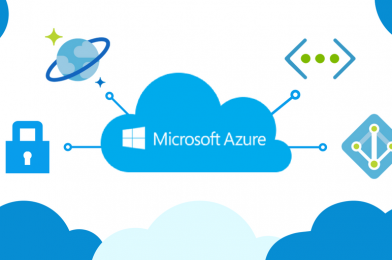Cloud computing is an innovation of computing world from all types of issues such as low storage capacity, huge investments, high operating costs, low security, huge maintenance, etc.
Microsoft Azure is in the one of the top cloud service providers in the market right now & growing at a faster rate with its unique features. Constant innovativeness, high flexibility and easy to use approach have acquired its huge popularity in the cloud computing segment. Azure is one of the widely deployed tolls by many organizations and offering more employment opportunities.
Azure Security Technologies
Azure Security Technologies is a security management system that strengthens the security posture of your data centers, and also provides advanced threat protection across your hybrid workloads in the cloud whether in Azure or not and also on premises.
Azure is a hybrid cloud service platform. It supports a wide variety of operating systems, computing languages, architectures, resources, applications, and computers.
Azure Security Technology addresses the three most urgent security challenges:
- Rapidly changing workloads.
- Increasingly sophisticated attacks.
- Security skills are in short supply.
To help users protected against these challenges, it provides tools to:
Strengthen security posture
It assesses user’s environment and enables to understand the status of resources, and whether they are secure.
Protect against threats
It assesses your workloads and raises threat prevention and security alerts.
Get secure faster
Everything is done in cloud speed. Because it is natively integrated, deployment of Security Centre is easy, providing you with auto provisioning and protection with Azure services.
Types of Services in Azure Security
For Azure data security and encryption best practices, the recommendations are around the services discussed below:
- General Azure Security
- Operations Security
- Applications Security
- Storage Security
- Network Security
- Backup and Disaster Recovery
- Identity and Access Management

Why is Cloud Technology getting so important?
Azure provides tools and capabilities for security to create a secure Azure platform. One of the cloud’s keys to data security is to prepare for future environments in which the data may exist and what protections are required for that state. Cloud provides significant benefits in addressing significant threats to information management.
In an on-site environment, organizations are likely to have unfulfilled responsibilities and limited resources available to invest in security, creating an environment where attackers can exploit vulnerabilities at all layers.
This will manage Docker-integrated Linux containers; develop Html, Python, .NET, PHP, Java, and Node.js apps; and develop backends for iOS, Android, and Windows computers. With more and more enterprises shifting to Azure cloud, there lies a definite need for Azure Security. Cloud storage eliminates the need to build data centers and invest in costly equipment.
Businesses are switching rapidly to cloud technology to speed up innovation and encourage collaboration. This is where Security Services comes into the picture. It is a procedure and technology that secure the cloud computing environment against cyberattacks.
AZ-500: Microsoft Azure Security Technologies

Master the skills required for the Microsoft Azure AZ-500 exam and gain security knowledge in Microsoft Azure.
AZ-500
This course is designed to help one master the skills required for the Microsoft Azure AZ-500 certification exam.
It is an associate-level exam which tests candidates for advanced security knowledge and experience working with various aspects of Microsoft Azure. In this course, you will progressively build and expand upon both your security knowledge and hands-on experience working with Azure technologies. This is not limited to: identity and security, hybrid cloud, monitoring, encryption, database security, and securing both apps and services for the Cloud.
More to go and more to run.
If you want to be a Certified Azure Security Engineer Associate and build your career in cloud computing, then I would suggest you DevOpsSchool, one of the best institute for Azure certification. DevOpsSchool offer Master in Microsoft Azure DevOps online and classroom training and certification course by an expert.
I hope this blog will helpful for you.
Thank you!!

